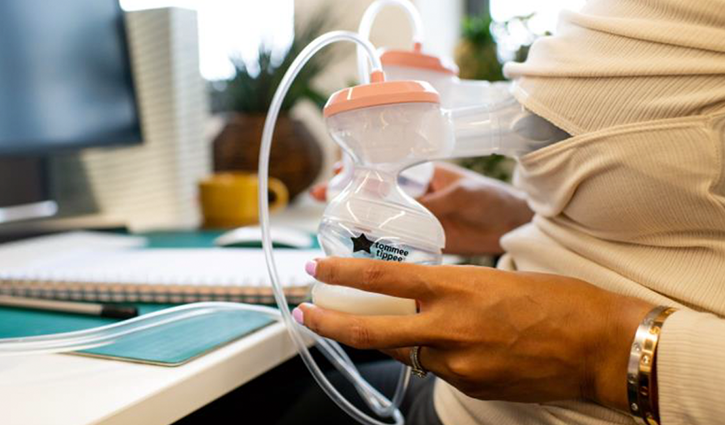Returning to work is a time of change for you and your baby. Well done on finding the best solution for you so that you can continue on your wonderful breastfeeding journey.
First steps towards breastfeeding and working
- Discuss your breastfeeding requirements with your employer well in advance of your return to work. This will assist you to come to the best options for expressing your breast milk.
- You will require a private room (not the toilet area) with a comfortable chair, a refrigerator where you can store expressed breast milk, somewhere to store an electric breast pump or manual breast pump, and time to express milk during lunch break and other breaks if necessary.
- Breast pumps are the most efficient way to express quickly and easily at work. You may like to opt for pump where you can express both breasts at the once time –remember that double pumping has much more than time saving benefits – it can increase the amount you achieve by up to 18% and is also higher in protein – much more beneficial for your baby.
- If you are without electricity, hand pumps are also effective- they just take a little longer. Look at the different ranges available: See options here.
- If possible, you may be able to have your baby brought to you at work. Talk about this with your employer. Discuss the possibility of breastfeeding during breaks and lunchtime, and flexible work hours and breaks.
- Be aware that expressing may seem difficult at first but most working mothers say they improve very quickly, and the benefits are worth the initial effort.
Breastfeeding and expressing and storing breast milk
Breastmilk must be stored correctly to keep it free from germs, which can make your baby ill. Safety suggestions include:
- Use clean hands and clean equipment.
- Express into clean containers. These may be glass or plastic containers or sealable plastic bags.
- Label each container with the time and date the breast milk was expressed.
- Refrigerate the breastmilk within one hour of expressing.
- Freeze excess breastmilk.
- Keep the milk cold on the commute home. For example, pack the milk in an esky with a freezer brick.
- Don’t use a microwave to thaw or reheat breastmilk. Thaw or warm it by putting the bottle or bag in a container of hot water. Then test the milk on the side of your wrist – it should feel about the same temperature as your skin.
Consider all your options and remain positive and determined

